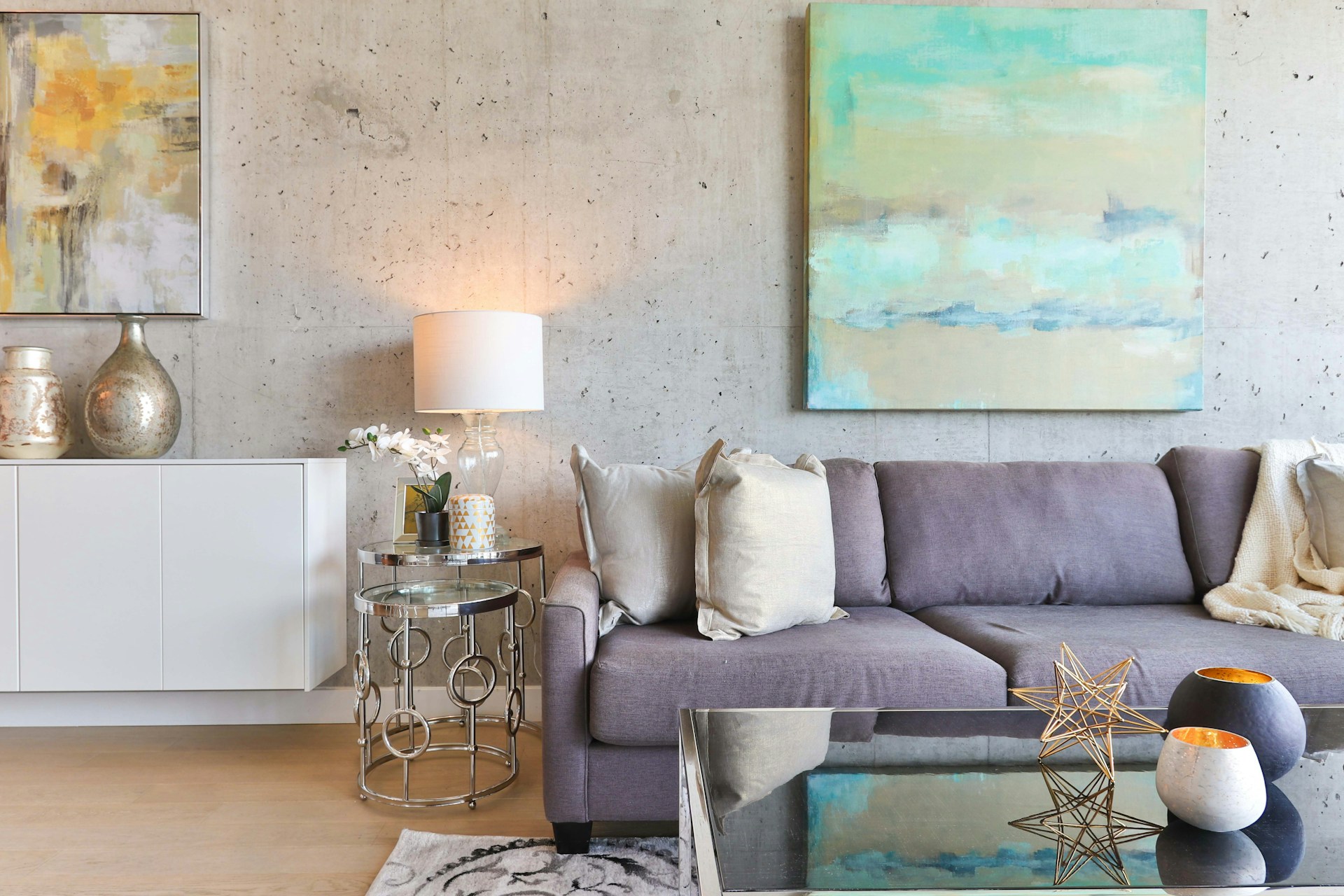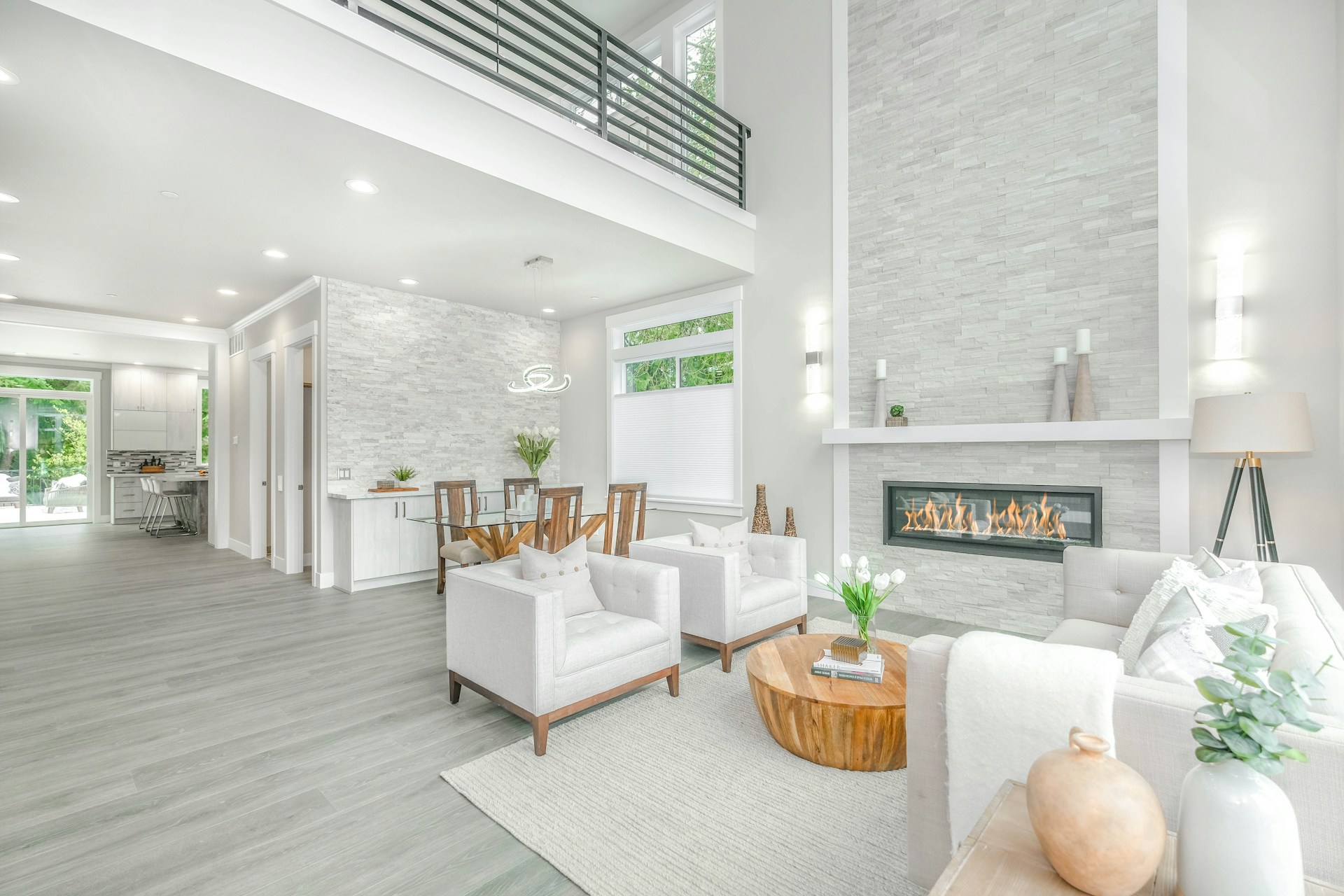Most real estate pros agree that staging your listings can make all the difference in real estate. Home staging, the art of showcasing a property’s potential, is more than just decoration—it’s a strategic tool for selling homes faster and at higher prices. Let’s explore the importance of home staging and how professional realtors can speed up your home sale.
Table of Contents
What are the Basics of Home Staging
How to Prepare Your Home for Staging
Strategic Room-by-Room Staging
Utilize Staging Techniques and Tricks
Final Touches and Presentation
Tailoring Staging Techniques to Different Property Types
Common Mistakes to Avoid in Home Staging
FAQs
Key Takeaways
- Home staging is a strategic approach to enhance a property’s visual appeal and marketability.
- Home staging principles include depersonalization, neutralization, space optimization, highlighting architectural features, and curb appeal.
- Preparing the home for staging involves decluttering, depersonalizing, cleaning, repairing, and enhancing curb appeal.
- Strategic room-by-room staging can significantly enhance a home’s appeal to potential buyers.
- Staging techniques and tricks can transform a property’s overall appeal.
- Hiring a professional stager can transform a home into a space that appeals to many potential buyers.
- Avoiding over-personalizing spaces, neglecting to address odors, and cluttering with too many decorative items are common staging mistakes to avoid.
What are the Basics of Home Staging
Home staging is a strategic approach to enhance the visual appeal and marketability of a property up for sale. It involves arranging furniture, decor, and other elements to highlight the property’s best features and minimize potential drawbacks.
The concept of home staging revolves around creating an environment that allows potential buyers to envision themselves living in the space and seeing the property as their future home.
From a realtor’s perspective, the primary objective of home staging is to maximize the property’s perceived value for potential buyers. A realtor aims to attract more interest, generate higher offers, and sell the property faster by presenting the home in its best possible light.
Critical Principles of Home Staging
Depersonalization
Depersonalization allows potential buyers to envision their lives in the space, fostering a neutral environment free from the current owner’s personal touch. This strategy helps eliminate emotional barriers and personal biases, enabling a broader audience to connect with and imagine the possibilities of the property.
Neutralization
Neutralizing the decor and color scheme is another essential principle of home staging. Expert realtors suggest opting for neutral colors and universally appealing decor to help broaden the property’s appeal and ensure it resonates with a broader range of potential buyers. This approach also makes it easier for buyers to visualize how they could personalize the space to suit their tastes.
Space Optimization
Maximizing the perceived space and flow of the home is crucial in home staging. Professional realtors recommend strategically arranging furniture and decor to highlight the property’s square footage, create natural pathways, and showcase the functionality of each room. It can involve decluttering, rearranging furniture, and even removing unnecessary items to make sense of openness and spaciousness.
Highlighting Architectural Features
Home staging often emphasizes the property’s architectural features to create visual interest and appeal. It might include highlighting original hardwood floors, crown molding, or built-in shelving. By drawing attention to these features, a realtor can help buyers appreciate the unique character and potential of the home.
Curb Appeal
The principle of curb appeal extends beyond the interior of the home. Professional realtors highlight the importance of creating a positive first impression by enhancing the property’s exterior appearance through landscaping. It may involve landscaping, exterior repairs, and adding inviting touches such as a fresh coat of paint or seasonal decorations to attract potential buyers when they arrive.
How to Prepare Your Home for Staging
Before you start staging your home, you need to prepare it properly. It involves decluttering, depersonalizing, cleaning, repairing, and enhancing curb appeal.
Declutter and Depersonalize
Decluttering and depersonalizing your home is essential to help potential buyers visualize themselves living in the space. Remove any unnecessary items and personal items, such as family photos or memorabilia. It will create a clean, neutral space for potential buyers to imagine making their own.
Clean and Repair
Cleaning and making minor repairs is also crucial. Deep clean every room, paying particular attention to high-traffic areas and surfaces. Identify any minor repairs that need to be fixed, such as leaky faucets or chipped paint, and take care of them before showing the home to potential buyers.
Enhance Curb Appeal
Improve curb appeal through landscaping and exterior maintenance: trim hedges, mow the lawn, and plant colorful flowers for an inviting and well-kept appearance. Make sure the house looks well-maintained from the outside, as this will be potential buyers’ first impression of the property.
Once you’ve prepared your home for staging, you can proceed to the actual staging process. Consider using the strategic room-by-room staging approach, which involves arranging furniture, highlighting features, creating a relaxing atmosphere in the bedrooms, and setting the table in the dining room.

Strategic Room-by-Room Staging
Strategic room-by-room staging can significantly enhance a home’s appeal to potential buyers when preparing it for sale. Professional realtors recommend implementing these staging techniques, which can help showcase the property’s best features and create a lasting impression.
Here’s a breakdown of crucial staging strategies for each room:
Living Room
Furniture Arrangement
- Arrange furniture to create an inviting, spacious layout that encourages conversation and flow.
- Consider removing bulky or outdated furniture to make the room appear larger.
Lighting and Ambiance:
- Maximize natural light by opening curtains and blinds to create a bright and welcoming atmosphere.
- Supplement natural light with strategically placed lamps and fixtures to enhance the room’s ambiance, especially during evening showings.
Kitchen
Organize Countertops and Cabinets
- Clear countertops of clutter to showcase available workspace and create a clean, organized look.
- Organize cabinets and drawers to demonstrate ample storage space and give buyers confidence in the kitchen’s functionality.
Highlighting Appliances and Features
- Showcase modern appliances and features by ensuring they are clean and in good working condition.
- Add subtle decorative touches, such as a bowl of fresh fruit or a potted herb plant, to add warmth and personality to the space.
Bedrooms
Creating a Relaxing Atmosphere
- Choose a neutral color palette and minimal decor to create a tranquil and inviting bedroom environment.
- Make the bed with crisp, clean linens and plush pillows to evoke a sense of comfort and luxury.
Bedding and Linens
- Invest in high-quality bedding and linens to enhance the overall aesthetic appeal of the bedroom.
- Add pillows or a cozy throw blanket to add texture and visual interest to the bed.
Bathrooms
Cleaning and Decluttering
- Thoroughly clean and declutter the bathroom to create a spa-like atmosphere that appeals to buyers.
- Remove personal hygiene products and minimize countertop clutter to create a clean and serene environment.
Adding Spa-Like Touches
- Incorporate luxurious towels, bath mats, and decorative accents to enhance the bathroom’s spa-like ambiance.
- Consider adding scented candles or a small vase of fresh flowers to create a relaxing sensory experience for potential buyers.
Dining Room
Setting the Table
- Set the dining table with simple, elegant place settings to create a welcoming and inviting atmosphere.
- Consider adding a centerpiece, such as a floral arrangement or decorative bowl, to add a touch of sophistication to the space.
Maximizing Space
- Remove excess furniture to create an open and spacious dining area that allows buyers to envision entertaining guests.
- Consider adding mirrors or artwork to expand the space and visually enhance its appeal.
Utilize Staging Techniques and Tricks
Professional realtors suggest utilizing staging techniques and tricks to transform a property and capture the attention of potential buyers.
Here’s a comprehensive guide to leveraging staging techniques effectively:
Use of Mirrors and Lighting
- Mirrors strategically placed can amplify natural light and make rooms appear larger and more spacious.
- Use lighting fixtures such as lamps, pendant lights, and spotlights to create ambiance and highlight key features of the home.
Add Greenery and Fresh Flowers
- Incorporating plants and fresh flowers brings life and color into the space, creating a welcoming atmosphere.
- Choose low-maintenance plants like succulents or ferns to add a touch of greenery without overwhelming the space.
Incorporate Art and Decor
- Selecting artwork and decor that complements the style of the home can add personality and character to each room.
- Opt for appropriately sized pieces for the space and make a statement without overpowering the room.
Strategic Furniture Placement
- Arrange furniture to maximize space and create functional layouts that showcase the flow of each room.
- Consider the room’s traffic flow and focal points when placing furniture to create an inviting and balanced atmosphere.
Create a Sense of Flow and Cohesion
- Use consistent color schemes and design elements throughout the home to create a cohesive look and feel.
- Ensure that each room transitions smoothly into the next to create a sense of continuity and harmony throughout the property.
Final Touches and Presentation
Ensuring a property is ready for open houses, and showings is critical to making a lasting impression on potential buyers. Realtors play a pivotal role in preparing a property, focusing on its cleanliness and staging to highlight its best features. Additionally, they can create an inviting atmosphere to spark interest and excitement among interested buyers.
Quick Fixes to Impress Potential Buyers
Realtors must implement quick fixes to enhance a property’s appeal before potential buyers arrive. This might involve organizing common areas, optimizing lighting, and adding elements like fresh flowers or scented candles. These details contribute to a memorable viewing experience, encouraging prospective buyers to consider the property seriously.
Leverage Photography to Maximize Impact
The digital marketplace is a primary avenue for property listings, so exceptional photography is crucial. Realtors should ensure that the home is presented in a way that showcases its strengths and appeals to the target market. Utilizing professional photography can highlight the property’s appeal and attract potential buyers’ attention online.
Tailoring Staging Techniques to Different Property Types
Effective staging can dramatically enhance a property’s appeal, requiring tailored strategies for different types. Whether it’s a cozy single-family home, a sleek condominium, a luxurious estate, or a vacant property, the right staging approach can help significantly boost its marketability.
Here’s how staging can be adapted to various property types to maximize appeal and marketability.
Single-Family Homes
For single-family homes, the goal is to balance warmth, functionality, and style. Realtors can arrange spaces to feel inviting, which might include strategic furniture placement, adding decorative accents, and enhancing curb appeal.
Condominiums and Apartments
Regarding condos and apartments, it’s about showcasing the efficiency of space and the benefits of community living. Realtors can focus on crucial living areas and unique features, employing flexible furniture arrangements and intelligent storage solutions to make the space feel larger.
Luxury Properties
For luxury properties, the approach needs to cater to the high expectations of affluent buyers. Realtors can emphasize luxury and sophistication in the presentation by incorporating high-end furnishings and finishes and highlighting premium amenities.
Vacant Homes
Staging vacant homes is crucial to help buyers visualize their life in the space, making it feel welcoming rather than empty. By furnishing key areas, realtors can give the property scale and purpose, which aid buyers in connecting emotionally to the property, which can be instrumental in securing a sale.
Common Mistakes to Avoid in Home Staging
It’s crucial to be aware of common mistakes to avoid when staging a home. These mistakes can detract from the property’s overall appeal and hinder sales.
Here are key points to consider for each aspect:
Neglecting to Address Odors
- Failing to address odors from pets, cooking, or other sources can leave a negative impression on potential buyers.
- Professional realtors recommend using air fresheners, scented candles, or odor-neutralizing sprays to eliminate unpleasant smells. This approach creates a fresh, inviting atmosphere throughout the home.
Cluttering with Too Many Decorative Items
- While decor can add warmth and personality to a home, overloading rooms with too many decorative items can create a cluttered and chaotic appearance.
- Professional realtors suggest streamlining decor by opting for a few well-chosen pieces that enhance the space without overwhelming it, allowing the home’s features to shine through.
- Over-personalizing a home can overshadow its features, limiting buyer interest by making it difficult for them to see past the personal touches to the property’s potential.

FAQs
Should I stage my home differently depending on the season?
Realtors often recommend seasonally staging your home to enhance its appeal. Adding cozy elements like blankets and rugs can create a warm atmosphere during colder months. Light fabrics and outdoor elements can highlight outdoor living areas in warmer months. Consulting with a realtor can provide tailored advice on seasonal staging strategies.
Should I consider any Feng Shui principles when staging my home?
For certain home types, incorporating Feng Shui principles can help create a harmonious and balanced environment. Some fundamental principles to consider include decluttering to promote positive energy flow, arranging furniture to facilitate smooth movement throughout the space, and incorporating elements of nature.
Should I stage my home differently if I’m selling in a buyer’s market versus a seller’s market?
Your staging approach should vary depending on the market conditions, as advised by realtors. In a buyer’s market, it’s crucial to stage your home distinctively to attract attention. Conversely, while the focus may shift towards enhancing value in a seller’s market, staging remains essential to highlight your property’s best features. Realtors from Lavelle Remax can offer insights on optimizing your staging strategy to match current market dynamics.
Can I use virtual staging techniques to showcase my home online?
Virtual staging can be a cost-effective and convenient way to showcase your home online. This technique involves digitally adding furniture, decor, and other elements to photos of your property to help buyers visualize the space’s potential. While it may not provide the same experience as physical staging, virtual staging can still significantly enhance the appeal of your listing and attract more attention online.
How do I know if I’ve over-staged my home?
Over-staging can detract from your home’s appeal, making spaces feel cluttered or impersonal. Realtors can help identify if a home has been over-staged by assessing whether the decor overshadows the property’s features or if the staging doesn’t resonate with the target demographic. A realtor’s expertise can ensure that staging effectively enhances your home’s appeal without overwhelming potential buyers.
Unlock Your Home’s Potential with Expert Staging: Contact Lavelle Remax Today!
Mastering the art of home staging is essential for every realtor aiming for success in the real estate market. Remember, staging isn’t just about furniture arrangement—it’s about creating an irresistible vision of a home’s potential.
Remember why staging matters: it enhances appeal, speeds up sales, and boosts prices. For a final tip, always prioritize decluttering and depersonalizing to create a blank canvas for potential buyers to envision their dream home.
At Lavelle Remax, we understand the power of presentation in selling homes in Danbury, CT. Let us help you stage your listings for maximum impact and ultimate success. Connect with us today to work with us!





